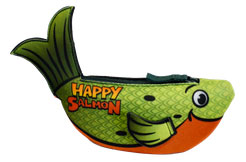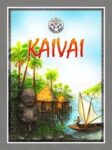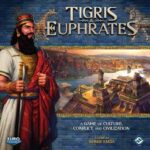After a year of online gaming or two-player gaming with my wife, I have attended my first convention: the first ever Dads on a Map Convention. Dads on a Map is a board game podcast by two ordinary dads with an extraordinary love of family, gaming, and all things in between. I have a distinct connection with the hosts, James and Sanchez, due to the fact that James was a writer for my podcast’s website and Sanchez was a long-time patron of our show before we ended production and the Dads picked up where we left off.
Vaccinated fans of the podcast gamed for five consecutive days in a historic Kansas City mansion, where all three stories of the home were utilized with sleeping arrangements, kitchens, and of course table space. I played 29 different board games, ranging from lightweight fillers to five-hour experiences. These are my ten favorites from the convention, but not necessarily the best ten games. Notables left off the list include Fresh Fish, Dolmen, and a four-way tie in Cuba Libre.
10. Happy Salmon
 You read that right, Happy Salmon. The game that has a playtime of 30-120 seconds. The game where the mechanisms are handshakes. Yes, this game ranks higher than 19 other games I played, including some of my all-time favorites. Happy Salmon has a personal legacy behind it, where somehow it had eluded me for many years. It’s a game 100% up my alley, yet I had never played it. Low and behold, it 100% lived up to expectations. Participating in a game where five other people are saying “puhpuhpuhpuhpuh” or “huvhuvhuvhuvhuv” and the others can parse what that means is a riot for players and spectators alike.
You read that right, Happy Salmon. The game that has a playtime of 30-120 seconds. The game where the mechanisms are handshakes. Yes, this game ranks higher than 19 other games I played, including some of my all-time favorites. Happy Salmon has a personal legacy behind it, where somehow it had eluded me for many years. It’s a game 100% up my alley, yet I had never played it. Low and behold, it 100% lived up to expectations. Participating in a game where five other people are saying “puhpuhpuhpuhpuh” or “huvhuvhuvhuvhuv” and the others can parse what that means is a riot for players and spectators alike.
3-6 Players • Ages 5+ • 2 minutes • $15
9. Cat in the Box
 From one animal game to another. Cat in the Box is a Japanese trick-taking game with some really fun wrinkles. For starters, none of the cards are suited, yet there is still the traditional following suit mechanism common in the genre. When the first player leads a card, they must declare what suit they are playing using a grid with four colors. When a card is played, a player token is put onto a 4×8 grid, which is important for scoring and ensuring one card of each type is played. If a player doesn’t want to follow suit, they can say that they do not have any of that color and play a different suit, including red (which is always trump). If there is ever a moment where a player has to play a card in a suit they cannot play or a card that has been played, they cause a paradox and the hand ends. If you get the number of tricks you bid at the beginning of the hand, you get a bonus based on your largest group of tokens on the grid. It sounds confusing, but in reality, is a clean spin on a genre that doesn’t often have the largest variations.
From one animal game to another. Cat in the Box is a Japanese trick-taking game with some really fun wrinkles. For starters, none of the cards are suited, yet there is still the traditional following suit mechanism common in the genre. When the first player leads a card, they must declare what suit they are playing using a grid with four colors. When a card is played, a player token is put onto a 4×8 grid, which is important for scoring and ensuring one card of each type is played. If a player doesn’t want to follow suit, they can say that they do not have any of that color and play a different suit, including red (which is always trump). If there is ever a moment where a player has to play a card in a suit they cannot play or a card that has been played, they cause a paradox and the hand ends. If you get the number of tricks you bid at the beginning of the hand, you get a bonus based on your largest group of tokens on the grid. It sounds confusing, but in reality, is a clean spin on a genre that doesn’t often have the largest variations.
3-4 Players • Ages 10+ • 30-45 minutes
8. 1836
 18xx games were played daily throughout the weekend, but my only one of the convention was the Winsome 1836. Building off of the 1830 rules, 1836 get players right into the thick of the action through the ten minor companies. Instead of private companies that offer income and some unique abilities, the ten minors have a train built into the company, and all ten build yellow track for three rounds. Following those rounds, the first stock round begins, which is tense due to low starting cash and reliance on other players to float a company. All this makes for a fascinating experience where the first set of Operating Rounds are not sluggish due to track already being on the board.
18xx games were played daily throughout the weekend, but my only one of the convention was the Winsome 1836. Building off of the 1830 rules, 1836 get players right into the thick of the action through the ten minor companies. Instead of private companies that offer income and some unique abilities, the ten minors have a train built into the company, and all ten build yellow track for three rounds. Following those rounds, the first stock round begins, which is tense due to low starting cash and reliance on other players to float a company. All this makes for a fascinating experience where the first set of Operating Rounds are not sluggish due to track already being on the board.
3-5 Players • Ages 21+ • 90-150 minutes
7. Bridges of Shangri-La
 Sometimes I’m baffled at where a game sits on the BGG weight. Bridges of Shangri-La is way closer to a 3 than I expected for a game that has a rules summary that fits on a notecard. Similar to classic abstracts, the weight doesn’t come from the actual rules, but the strategy involved. Turns are based around three different actions: placing a master where you already have one, placing a student on top of a master, or causing all students to make a journey between villages, breaking the connection between the two. The winner is the player with the most masters on the board. This is a game, similar to many train games, where leaching off of the successes of others will put one in a better position. Our play was a quiet one, where everyone was studying player pieces to snuff out that best move for the short and long terms. If you want something with minimal rules overhead, but has lots of game to explore, Bridges of Shangri-La is one to try.
Sometimes I’m baffled at where a game sits on the BGG weight. Bridges of Shangri-La is way closer to a 3 than I expected for a game that has a rules summary that fits on a notecard. Similar to classic abstracts, the weight doesn’t come from the actual rules, but the strategy involved. Turns are based around three different actions: placing a master where you already have one, placing a student on top of a master, or causing all students to make a journey between villages, breaking the connection between the two. The winner is the player with the most masters on the board. This is a game, similar to many train games, where leaching off of the successes of others will put one in a better position. Our play was a quiet one, where everyone was studying player pieces to snuff out that best move for the short and long terms. If you want something with minimal rules overhead, but has lots of game to explore, Bridges of Shangri-La is one to try.
3-4 Players • Ages 10+ • 60 minutes • $59
6. Kaivai
 I had wanted to try Kaivai based on design pedigree alone, being the first major release from Helge Ostertag (most known for Terra Mystica and Gaia Project fame). Kaivai has a lot of innovative mechanisms. Each turn begins with bidding for turn order, which also dictates the price of the building and the speed of boats. The lowest bid grants the placement of the Fishing God, which improves the fishing action for that island and awards influence for those with a particular building on said island. Players must manage three different resources, two of which “degrade” at the end of a round, and one which is so hard to come by (influence) that we saw three of the four players pass on taking an action for an entire round just to gain two free influence. This has little to no elements of multiplayer solitaire, particularly because you are watching every action the table takes. In one of the coolest plays of the game, a player moved a boat to where it would sink one of mine, which made him lose points enough to where he would be in last, which means he would be first to bid on turn order. It has a lot of rough edges and in some areas shows its age, but man am I glad I have a copy to explore myself.
I had wanted to try Kaivai based on design pedigree alone, being the first major release from Helge Ostertag (most known for Terra Mystica and Gaia Project fame). Kaivai has a lot of innovative mechanisms. Each turn begins with bidding for turn order, which also dictates the price of the building and the speed of boats. The lowest bid grants the placement of the Fishing God, which improves the fishing action for that island and awards influence for those with a particular building on said island. Players must manage three different resources, two of which “degrade” at the end of a round, and one which is so hard to come by (influence) that we saw three of the four players pass on taking an action for an entire round just to gain two free influence. This has little to no elements of multiplayer solitaire, particularly because you are watching every action the table takes. In one of the coolest plays of the game, a player moved a boat to where it would sink one of mine, which made him lose points enough to where he would be in last, which means he would be first to bid on turn order. It has a lot of rough edges and in some areas shows its age, but man am I glad I have a copy to explore myself.
3-4 Players • Ages 12+ • 120 minutes
5. An Infamous Traffic
 Fellow BGQ reviewer Andrew openly hates this game, but wow it was cool. An opaque game from Cole Wehrle, An Infamous Traffic has players playing as British investors in the East India Trade Company in the 1830s who are looking to capitalize on the Chinese opium trade market. An uncomfortable theme for certain, but is abstracted enough to distance players from the history. This is a game about finding a team to invest in the three areas of trade: opium, boats, and merchants. Depending on the board state, players may need to rely on local smugglers to complete the trade route, or can reap the benefits of an open port controlled by Great Britain. An Infamous Traffic is a game of opportunism, finding those few and far between chances to make a couple of bucks, which can be spent on more industries or can be spent toward a new hat or noble marriage. Seeing strategy in your first play can be near impossible, but this is another game that rewards continued exploration. Rumor has it Cole will be printing a second edition through his company, so keep your eyes peeled for that one.
Fellow BGQ reviewer Andrew openly hates this game, but wow it was cool. An opaque game from Cole Wehrle, An Infamous Traffic has players playing as British investors in the East India Trade Company in the 1830s who are looking to capitalize on the Chinese opium trade market. An uncomfortable theme for certain, but is abstracted enough to distance players from the history. This is a game about finding a team to invest in the three areas of trade: opium, boats, and merchants. Depending on the board state, players may need to rely on local smugglers to complete the trade route, or can reap the benefits of an open port controlled by Great Britain. An Infamous Traffic is a game of opportunism, finding those few and far between chances to make a couple of bucks, which can be spent on more industries or can be spent toward a new hat or noble marriage. Seeing strategy in your first play can be near impossible, but this is another game that rewards continued exploration. Rumor has it Cole will be printing a second edition through his company, so keep your eyes peeled for that one.
2-5 Players • Ages 14+ • 45-90 minutes
4. Tichu
 While it may not follow the same rules as the traditional trick taker, Tichu stands tall as the best (in the opinion of myself and many others). Instead of focusing on mechanisms, let me talk about the highs and lows this deck of cards can provide. For starters, calling tichu or grand tichu takes calculations and a pinch of gusto, so whether it succeeds or fails, there will be a wide range of emotions about the table. Bombs are a game changer, in the uncommon hands they are present. But what happens when two players have a bomb? Or everyone has a bomb?? The probability of that happening seems low, but I’ve seen it done. One bomb being played shifts the entire dynamic of a hand, so if more than one is played, there is chaos on how a hand can score. The winning team is the first to 1000 points, but points can come in traditional 100 point hands or 500 point swings. Tichu is one of those games that you can pick up and play once in a blue moon and have a good time or allow it to become a lifestyle game like many Midwesterners do with Euchre. It’s teetering toward the latter for me.
While it may not follow the same rules as the traditional trick taker, Tichu stands tall as the best (in the opinion of myself and many others). Instead of focusing on mechanisms, let me talk about the highs and lows this deck of cards can provide. For starters, calling tichu or grand tichu takes calculations and a pinch of gusto, so whether it succeeds or fails, there will be a wide range of emotions about the table. Bombs are a game changer, in the uncommon hands they are present. But what happens when two players have a bomb? Or everyone has a bomb?? The probability of that happening seems low, but I’ve seen it done. One bomb being played shifts the entire dynamic of a hand, so if more than one is played, there is chaos on how a hand can score. The winning team is the first to 1000 points, but points can come in traditional 100 point hands or 500 point swings. Tichu is one of those games that you can pick up and play once in a blue moon and have a good time or allow it to become a lifestyle game like many Midwesterners do with Euchre. It’s teetering toward the latter for me.
4 Players • Ages 12+ • 60 minutes • $17
3. Go
 Go is a game where (once you have a number of games under your belt) you can set out the board, understand the rules, and entirely focus on the strategy of playing against your opponent. Playing with Dads on a Map host Nick Sanchez was relaxing as we discussed the pros and cons of each move. We sat under the front porch as a storm blew through Kansas City, with the occasional mist covering the pieces. And that was a-okay, seeing this was a yard sale copy, and the stones are water resistant. Really nice to play Go in person, a rarity for one of my favorites.
Go is a game where (once you have a number of games under your belt) you can set out the board, understand the rules, and entirely focus on the strategy of playing against your opponent. Playing with Dads on a Map host Nick Sanchez was relaxing as we discussed the pros and cons of each move. We sat under the front porch as a storm blew through Kansas City, with the occasional mist covering the pieces. And that was a-okay, seeing this was a yard sale copy, and the stones are water resistant. Really nice to play Go in person, a rarity for one of my favorites.
2 Players • Ages 6+ • 30-180 minutes • $20
2. Dune
 In person Dune with the full complement of players is an unrivaled experience. You know that moment you have in games like Root where you say “your faction can do what now?” So Dune is like that but the rule bending compared to other games is jaw dropping. Any auction won pays to the emperor. Any new units added to Arrakis are paid to the Spacing Guild. The native Fremen ride the worms. The Bene Gesserit demands what may or may not be used in combat against them. And these are just examples from the basic rules! Add in the advanced powers and the factions are even more busted. Combine all this with the shifting alliances where powers are shared and you have some cool synergies that may be built. Our game had moments where all three of the allied groups had their opportunity to win. Over 50% of the soldiers and leaders were laid to rest after battle. Tensions ran high among two of the partners. Dune creates thematic experiences that cannot be replicated in any other game while being tied so closely to Frank Herbert’s classic.
In person Dune with the full complement of players is an unrivaled experience. You know that moment you have in games like Root where you say “your faction can do what now?” So Dune is like that but the rule bending compared to other games is jaw dropping. Any auction won pays to the emperor. Any new units added to Arrakis are paid to the Spacing Guild. The native Fremen ride the worms. The Bene Gesserit demands what may or may not be used in combat against them. And these are just examples from the basic rules! Add in the advanced powers and the factions are even more busted. Combine all this with the shifting alliances where powers are shared and you have some cool synergies that may be built. Our game had moments where all three of the allied groups had their opportunity to win. Over 50% of the soldiers and leaders were laid to rest after battle. Tensions ran high among two of the partners. Dune creates thematic experiences that cannot be replicated in any other game while being tied so closely to Frank Herbert’s classic.
2-6 Players • Ages 14+ • 120 minutes • $45
1. Tigris and Euphrates
 Just like Go above, the four players set out the board, drew five tiles, and got to playing without touching the rulebook. That feeling is sometimes necessary, particularly during a convention filled with learning and teaching tens of new games. I won’t belabor everyone with my feelings on Tigris and Euphrates, as it’s common knowledge to be my favorite game. Even so, games can feel quite different from each other. In our game, only one monument was built, and not until the last few rounds of the entire game. We spent most of our time causing all-out wars where three players would duke it out. And it’s always a benefit when I win.
Just like Go above, the four players set out the board, drew five tiles, and got to playing without touching the rulebook. That feeling is sometimes necessary, particularly during a convention filled with learning and teaching tens of new games. I won’t belabor everyone with my feelings on Tigris and Euphrates, as it’s common knowledge to be my favorite game. Even so, games can feel quite different from each other. In our game, only one monument was built, and not until the last few rounds of the entire game. We spent most of our time causing all-out wars where three players would duke it out. And it’s always a benefit when I win.
2-4 Players • Ages 12+ • 90 minutes
Source: Board Game Quest




